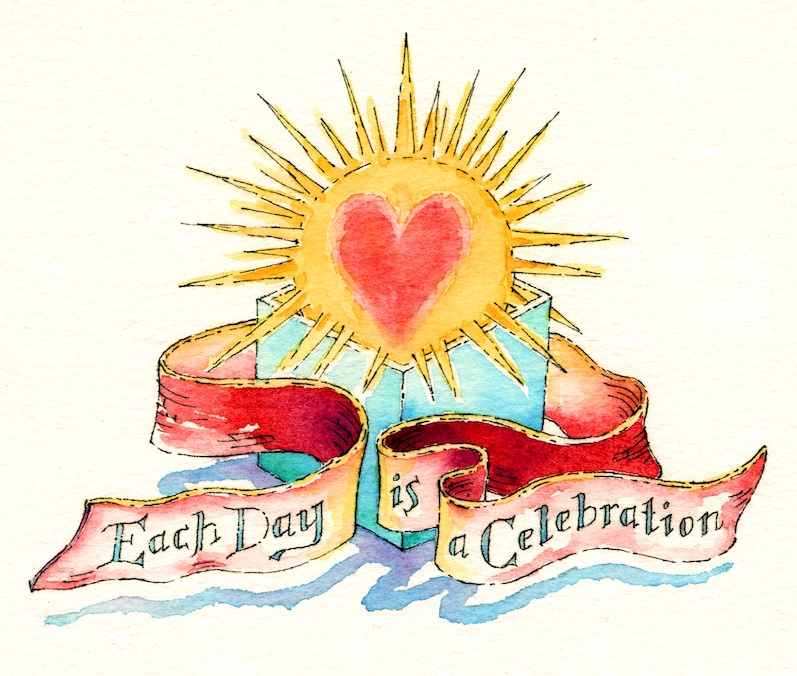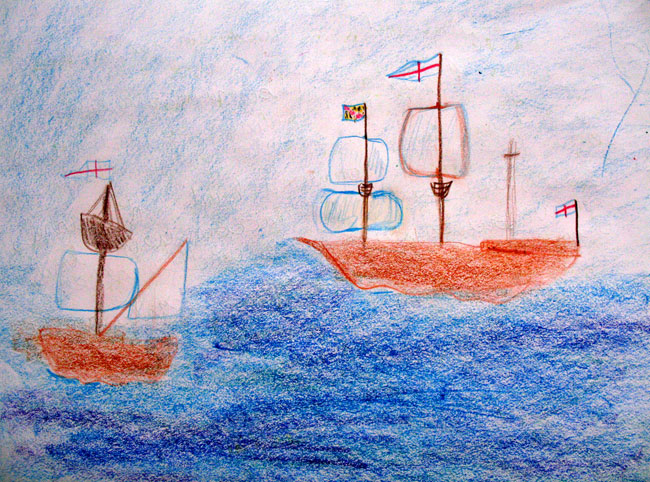Pictures by my daughter from the Local History and Geography homeschooling block.
On this day in 1788, Maryland became the 7th state to ratify the Constitution. Perhaps you live in Maryland and never knew how this came about. Or perhaps Maryland is terra incognita because you live far away, in Nepal, or Virginia. In any case, I am going to tell you.
For thousands of years human beings on the shores of the Chesapeake Bay fished, farmed, and fought one another without foreign interference. However, the seagoing vessels across the Atlantic Ocean grew ever-larger, and when Italian Giovanni Caboto, in the pay of Henry VII of England, wandered into codfish-rich Newfoundland/Maine waters in 1497, that was enough for England to claim the promising land. (They also insisted on referring to Caboto as “John Cabot” to help make their case.)
One hundred and ten years later Captain John Smith, although mainly concerned with the floundering colony in Virginia, ventured up the Chesapeake Bay, pronounced it goodly and pleasant, and produced a map that received much attention. So when George Calvert, the first Lord Baltimore, tired of the anti-Catholic feeling in Protestant England (Catholics were considered untrustworthy and could not hold office, vote, or worship openly), he asked his friend King Charles I to give him a piece of this New World land.
Calvert had tried Newfoundland first, but his settlers died of harsh weather and disease. His request was granted, but the Virginians were unhappy about the potential nearness of Papists. Well, suggested Charles, how about just a northern sliver of Virginia, about 10,000 square miles around the Chesapeake Bay—nobody there except non-Christian native dwellers! Calvert accepted this parcel, to tax and govern as he saw fit, in exchange for two Indian arrowheads a year, an enviably low rent.
Shortly afterward George Calvert died, so his younger son Leonard set sail in the Ark and the Dove and a party that included settlers and adventurers, several gentlemen, a handful of women, a number of indentured servants, and three priests. The group was a mixture of Catholics and Protestants, as it was Calvert’s intention to set up a religious-tolerant community. When they arrived at the mouth of the Potomac in March 1634, they were kindly greeted by the surprised yet helpful Yaocomico inhabitants, who, tiring of attacks by their Susquehannah neighbors, were fortuitously planning a move west. They granted the newcomers their land, along with houses, fields, and useful botanical, zoological, and culinary tips. The settlers renamed the territory Terra Maria, in honor of Queen Henrietta Maria (daughter of King Henri IV of France). Terra Maria: Mary-Land.
The Maryland settlers were better prepared than their hapless predecessors in Jamestown, those aristocratic younger sons who arrived in their best clothes ready to pick up the gold and jewels lying scattered on the shores of America. No, these folks brought tools and seeds and useful skills like carpentry, and had been recruited by Calvert on condition of willingness to work hard. The village, now called Saint Mary’s City, Maryland’s capital, was quickly fortified and the surrounding lands divided and allotted according to size of the household living on it: for heads of household, wives, and indentured servants, 100 acres each; for children 50 acres each. You can imagine that this arrangement encouraged emigration of large groups. “And here is my cousin Robert… and his son John…and their three manservants…” Voilá—450 more acres!
Although the Calverts were Proprietors—they actually “owned” Maryland and could govern it as they saw fit—the settlers announced that they intended to make their own laws. Calvert objected, and an uneasy compromise was worked out, but this insistence on self-rule was, as we know, a harbinger of things to come. Calvert did convince them to pass his Act of Toleration in 1649, which guaranteed religious freedom to Christians, although the arrangement was: if you deny the divinity of Jesus Christ you will be executed. Such means of ensuring uniform worship have not entirely fallen out of favor in 2010. The Act lasted until the Puritans chopped off Charles I’s head for tyrannical cluelessness (no longer a capital offense in Great Britain). In 1692 England and its colonies were declared officially Protestant. The new leaders burned down the Catholic churches in Maryland and moved its capital to Puritan-founded Providence—renamed Annapolis for Protestant Queen Anne.
To be continued April 29th: Part II.



